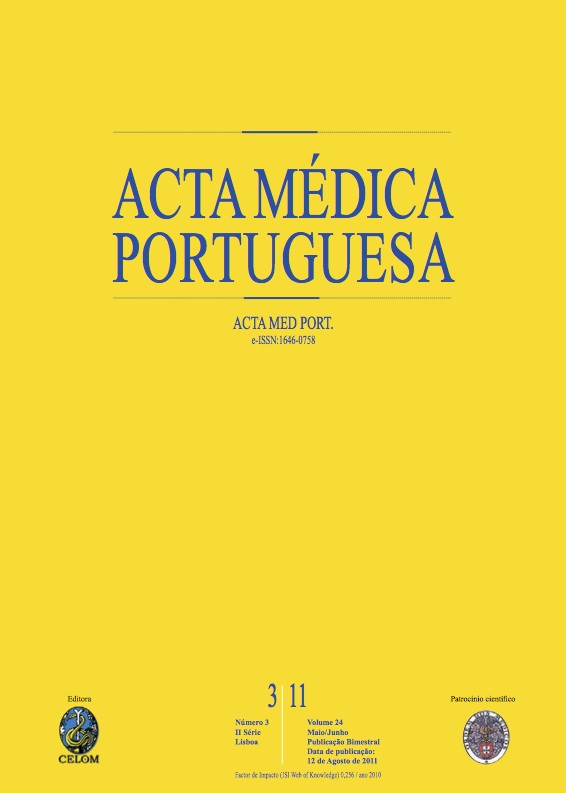As citologias na promoção da saúde sexual das adolescentes utentes do Centro de Atendimento a Jovens de Coimbra.
DOI:
https://doi.org/10.20344/amp.464Resumo
Adolescents usually have risky sexual behaviors which can result in an unwanted pregnancy and/or in transmission of sexually transmitted infections (STIs). Medical consultation can provide adequate and early sexual information. Medical surveillance and pelvic examination are essential for a healthy sexual life. Despite the availability of two vaccines against the major oncogenic types of human papilloma virus, the main agent of cervical cancer, performance of cytology is still needed. The purpose of this study was to characterize the group of adolescents/young adults who made their first cytology during 2005 and 2006 and determine the results of gynecological observation and first cytology.This is a retrospective study of users of Centro de Atendimento a Jovens (CAJ) of Centro de Saúde de Celas de Coimbra, who made their first cytology in 2005 and 2006. Clinical data were analyzed to determine the following parameters: demographic data, habits, sexual parameters, gynecological observation, symptoms, first and subsequent cytology results and consultations dropout rate until January 2009.During these two years, 172 first cytologies were performed. At first consultation in CAJ, the average age was 19 years old (15-24). At first intercourse, which occurred on average at 17,5 years old (13-21), 75,6% of girls used condom, 4,6% only pill and 16,3% did not use any contraceptive method. The mean number of sexual partners at first consultation was 1,6. The majority needed to take emergency pill (43/54). Gynecological observation was abnormal in 50,6% of cases, but only 10% reported symptoms. First cytology was performed, on average, three years after first intercourse, and was normal in 149 cases, unsatisfactory for evaluation in one case and abnormal in 22 (eight bacterial vaginosis, six with signs of inflammation, six candidiasis and two low grade intraepithelial lesions). Fifty nine per cent of adolescents made, at least, once more cytology. Three more cases of low grade intraepithelial lesions were detected. Dropout rate of consultations was 17%.In adolescence, isolated pill use increases the risk of transmission of STIs. Not using any contraceptive method may be related to the increasing use of emergency contraceptive pills. Abnormal gynecological examination may be present in asymptomatic girls. Dysplastic lesions (which are increasing in adolescence) have the same course of adulthood, supporting the need for screening and continuity of follow-up in young people.Downloads
Downloads
Como Citar
Edição
Secção
Licença
Todos os artigos publicados na AMP são de acesso aberto e cumprem os requisitos das agências de financiamento ou instituições académicas. Relativamente à utilização por terceiros a AMP rege-se pelos termos da licença Creative Commons ‘Atribuição – Uso Não-Comercial – (CC-BY-NC)’.
É da responsabilidade do autor obter permissão para reproduzir figuras, tabelas, etc., de outras publicações. Após a aceitação de um artigo, os autores serão convidados a preencher uma “Declaração de Responsabilidade Autoral e Partilha de Direitos de Autor “(http://www.actamedicaportuguesa.com/info/AMP-NormasPublicacao.pdf) e a “Declaração de Potenciais Conflitos de Interesse” (http://www.icmje.org/conflicts-of-interest) do ICMJE. Será enviado um e-mail ao autor correspondente, confirmando a receção do manuscrito.
Após a publicação, os autores ficam autorizados a disponibilizar os seus artigos em repositórios das suas instituições de origem, desde que mencionem sempre onde foram publicados e de acordo com a licença Creative Commons









